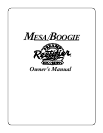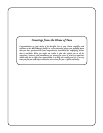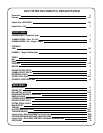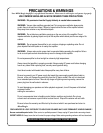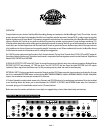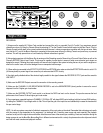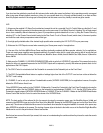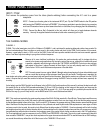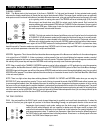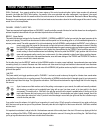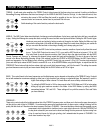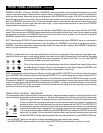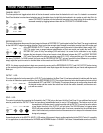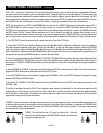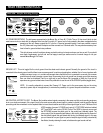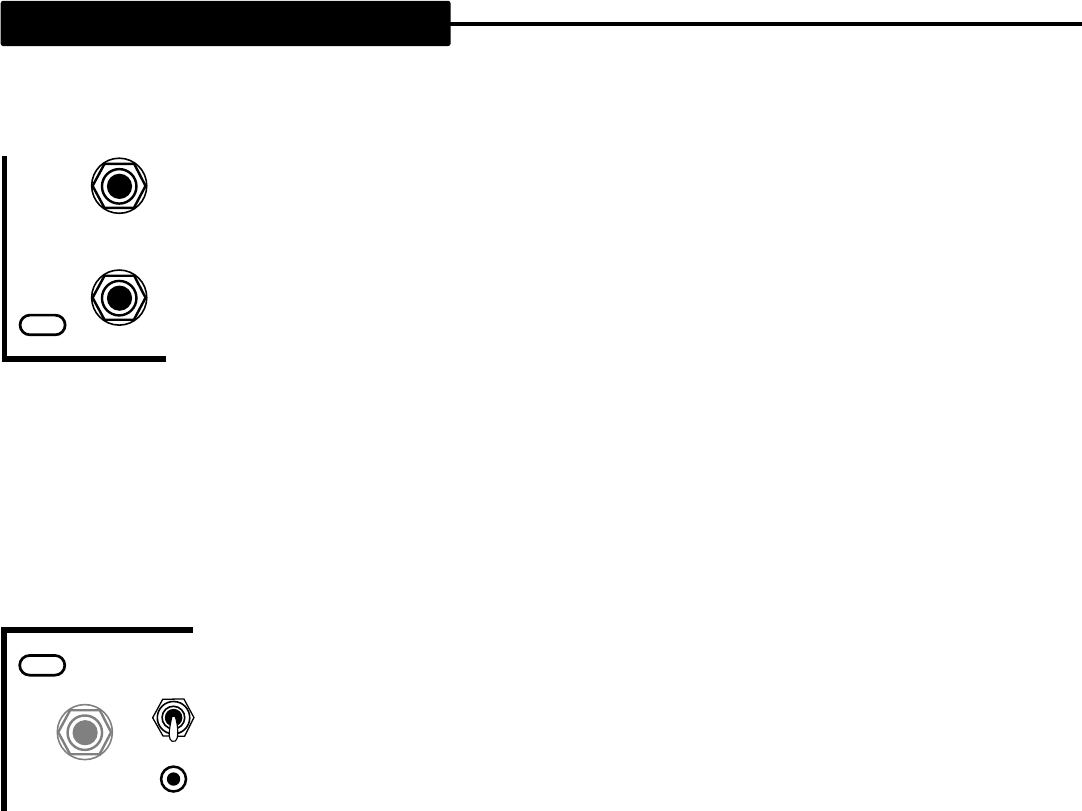
INPUT / FT.SW.
First remove the protective covers from the tubes (plastic webbing) before connecting the A.C. cord to a power
receptacle.
INPUT: Connect your favorite guitar to the instrument INPUT jack. Flip the POWER switch to the ON position
while leaving the STANDBY switch set to STANDBY.” (It is always a good idea to practice this start up procedure
as at least 30 seconds of warm-up time lessens the shock on cold tubes, thus prolonging their life substantially.)
FT.SW. Connect the
Recto Pre’s
Footswitch to this jack, which will allow you to toggle between channels
remotely. Use only the supplied footswitch and stereo cable when connecting to this jack.
THE CHANNEL MODES:
CHANNEL 1:
CLEAN: This is the lowest gain circuit of the 3 Modes in CHANNEL 1 and is optimized for producing balanced pristine clean sounds. For
the best understanding of how to achieve a great sound in this mode, please refer back to the GAIN Control section of this manual.
However, a great place to start is 12:30 or so on the GAIN Control with more sparkle available below this and more warmth apparent
above...from there adjust according to your guitars individual response.
Because of its more traditional architecture, this mode also works extremely well for vintage style drive
sounds in live (power amp) applications. By turning the gain all the way up, a beautiful old school solo sound
is possible...especially with neck single coil pick-ups. The TREBLE and MIDDLE Controls can also add gain
and sustain to this sound ( reduce Presence to blend highs ), but you will probably want to run the BASS
Control below 10:30 to avoid flubbiness and preserve a focused attack.
FAT: This mode comes from our original
Mark 1 Boogie
and puts emphasis on the low mid and bottom end
and as a result the top strings of the instrument have more girth and width. The difference is wonderful for
clean single note soloing where you need more body and warmth behind the notes. Because this mode is very different from the CLEAN
mode, it requires that you reset the controls for balance. We suggest running the BASS Control a couple notches lower, especially for
chording.
It also helps to use the GAIN Controls’ tonal influence (refer to GAIN in the Controls section of this manual) to achieve the best results with
this mode. We like to set the GAIN somewhere between 10:30 and 12:00 for chording as this brings out the sparkle and improves the
headroom. For single note clean soloing you can run the GAIN up around 1:00 - 2:00. If you are going for a pushed rhythm sound with the
GAIN all the way up, you will likely have to run the BASS below 9:30 to avoid flubbiness and boom.
BRIT: This mode was inspired by the great sounding amps of the 50s’ & 60s’ that were built in Great Britain. These classic amplifiers were
basically “upside down Leo circuits” but none the less had a signature sound all their own, due largely to the fact that they were powered
by the pentode available to them at the time…the Euro style EL 34. However, the preamp sections of these classics were also different and
here in the
Recto Pre
they have been distilled down to a very different and useful rhythm mode. With emphasis on a lower region of Treble
and more punch in the low mids, this mode is truly different than the other modes in CHANNEL 1 It works extremely well for both chording
and single note soloing with its thicker throatier nature. It also lends itself well to clipped sounds when used live with a power amp, with its
less extended top end and wider mid section, that produces some of the coolest crunch rhythm sounds around in the LIVE applications.
For Direct applications it may be necessary to run the TREBLE and PRESENCE a little lower. The circuitry used to preserve the beautiful
clean sounds of CHANNEL 1 can put too much emphasis on the upper harmonics and when BRIT is used with max-ed out GAIN settings,
can sound thin and buzzy without the roll off that occurs in the CHANNEL 2 Direct circuit.
PAGE 4
FRONT PANEL CONTROLS:
INPUT
FT.SW.
INPUT
FT.SW.
CLEAN
FAT
BRIT



